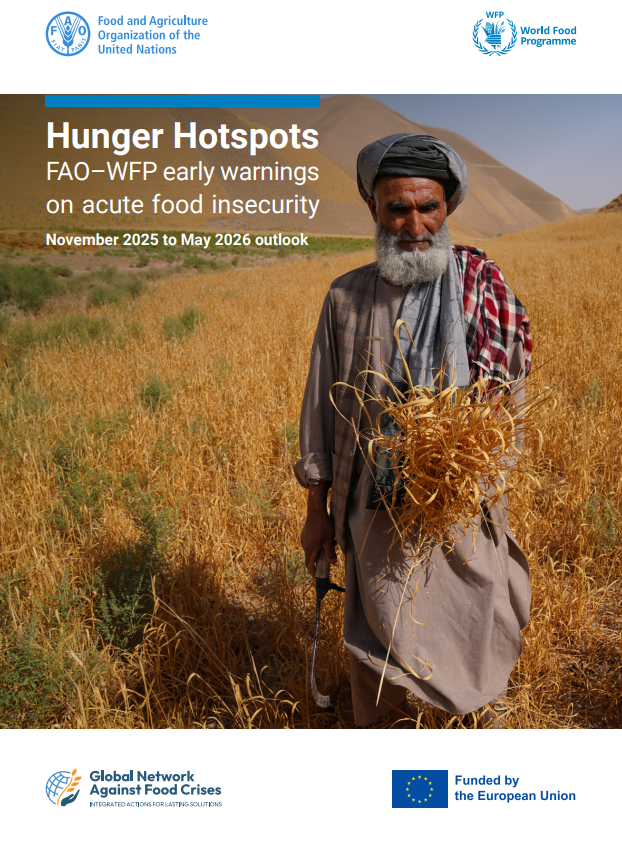The United Nations has sounded a stark warning about an impending global food crisis, issuing what it describes as a “red alert” for 2026. According to the newly released UN Global Food Security Outlook, several converging factors ( from climate disruptions to geopolitical conflict and declining agricultural productivity ) are heightening the risk of severe shortages across multiple regions. While food insecurity has been rising steadily for the past five years, the UN’s updated projections depict an unprecedented alignment of pressures capable of destabilizing both developed and developing nations.
Central to the concern is the cascading impact of extreme weather, which has disrupted harvests in major producing nations including the United States, China, India, Brazil, and parts of Sub-Saharan Africa. Prolonged droughts, devastating floods, and increasingly unpredictable weather patterns have weakened global supply chains. The report points out that 2025 has already recorded some of the most erratic seasonal fluctuations in decades, with rainfall deficits in East Africa, heatwaves in South Asia, and record-low snowpack in North America – all of which undermine crop forecasts heading into the next year.
Compounding the climate shocks is the persistence of geopolitical conflict. The wars in Eastern Europe and the Middle East continue to affect grain and fertilizer supplies, while maritime routes have become vulnerable to blockades, drone strikes, and rising insurance premiums. Even temporary logistical disruptions have global consequences: the halting of Black Sea grain shipments earlier in the year, the instability around the Suez trade corridor, and export restrictions imposed by some Asian rice-producing countries have all contributed to unstable pricing and supply volatility. The UN report highlights that more than 18% of globally traded wheat and 30% of sunflower oil output remain exposed to regions of active conflict or political tension.
Economically, sharp currency depreciation in several developing economies is pushing staple foods beyond the reach of low-income households. Nigeria, Egypt, Pakistan, and Sri Lanka are flagged as high-risk countries where inflation continues to erode purchasing power. A growing number of middle-income nations are struggling as well, as elevated debt burdens reduce their capacity for food imports and government subsidies. Financial markets, reacting to the UN’s warning, saw agricultural commodity futures surge, with wheat, maize, and soybeans rising sharply on concerns of speculative accumulation and future supply gaps.
Another emerging challenge is dwindling fertilizer availability. Despite improvements earlier this year, global fertilizer production has not fully recovered from post-pandemic shocks and the lingering effects of energy market instability. The UN projects that Sub-Saharan Africa could witness a 12% reduction in fertilizer usage next year, with direct implications for crop yields. Countries already facing poor soil conditions ( including Niger, Burkina Faso, and Malawi ) are expected to be among the worst affected, raising humanitarian concerns ahead of the 2026 planting season.
Yet one of the most alarming findings in the report is the erosion of global buffer stocks. Strategic reserves maintained by key producers have shrunk after consecutive years of poor harvests and rising domestic demand. What was once a stabilizing tool for smoothing price fluctuations has, in many cases, become insufficient to protect markets from external shocks. The UN warns that without coordinated action, the world could see shortages that extend beyond vulnerable regions into the broader global market, affecting food manufacturing industries, livestock supply chains, and even energy sectors reliant on agricultural by-products.
The UN is calling for immediate international cooperation to mitigate the looming crisis. Recommended measures include easing trade restrictions, increasing financial support for high-risk countries, investing in drought-resistant crops, and accelerating climate-adaptation technologies. Nations are also urged to strengthen their early-warning systems and rebuild food reserves, a task that many governments have deferred due to competing fiscal pressures.
Humanitarian agencies are equally concerned. The World Food Programme estimates that without decisive action, an additional 60 million people could fall into acute food insecurity next year, deepening inequality and triggering potential social instability. The agency notes that hunger often becomes a catalyst for broader crises – fueling migration, internal displacement, and political unrest.
Despite the grim outlook, analysts note that early interventions can still avert the worst-case scenarios. Improvements in global trade cooperation, restoration of disrupted supply routes, and stabilization of key conflict zones could ease some of the pressure. The private sector may also play a crucial role through agricultural innovation, insurance solutions, and investment in sustainable infrastructure.
For now, however, the UN’s red alert serves as a stark reminder of the fragility of the global food system. It underscores the urgent need for coordinated international action, especially as climate volatility and geopolitical competition increasingly shape the world’s agricultural future. Whether governments respond decisively ( or allow the crisis to unfold unchecked ) may define global stability in 2026 and beyond.

